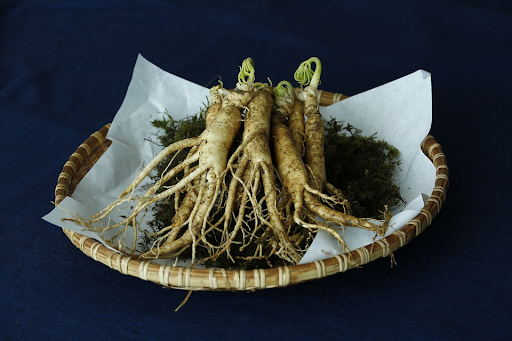Article by: Rebecca Siggers
Irregular sugar level or diabetes is a disease affecting millions of people today. Diabetes is a term broadly used for a group of conditions that can affect the level of sugar and insulin in your body. While it is a common belief that consuming more sugar can lead to diabetes, it might not be the case. From lifestyle to hereditary, there can be many factors that affect your sugar level.
To maintain overall health, it becomes imperative to keep sugar levels in check. Any irregularity in blood sugar levels can hinder your body’s normal functioning. It can be a precursor of a series of ailments causing damage to various organs.
Besides taking medicines and altering lifestyle, there are a few alternative ways to control sugar level. Organic herbs can help naturally lower blood sugar, and help people who are diabetic or prediabetic. The article will discuss what diabetes is, its types, 5 natural herbs that can help you in controlling it and how you can consume them.
What is Diabetes?
Diabetes is a chronic condition that can impact insulin and blood sugar level in your body. Sugar or glucose comes from food that we eat, and it is the primary source of energy. The pancreas present in the human body produces a hormone called insulin. It is insulin that helps glucose from food go into cells and get used as energy. Once you eat food, the blood sugar level in your body rises. Then beta cells in the pancreas get the signal to release insulin in the bloodstreams. Insulin attaches to the cells and signals them to absorb sugar from the blood.
There are times when the body either doesn’t make any or enough insulin or cannot use it because organs have stopped responding to it. Due to this, the glucose stays in the blood and doesn’t go to cells. The sugar or glucose present in your blood can increase, leading to diabetes.
Irregular levels of sugar can induce symptoms like weight loss, increased hunger and thirst, extreme fatigue, blurry vision, and frequent urination. Keeping a tab on the symptoms can prove helpful in checking the blood sugar level.
If the sugar level is too high, it can adversely impact health. The natural bodily processes get affected, leading to ailments like cardiovascular diseases, blood pressure, neuropathy, nephropathy, retinopathy, and diarrhoea. Before reading further you can check marijuana strains that help in treatment of diabetes.
Types of Diabetes:
There can be a few types of diabetes, depending upon the cause. Here are four types of diabetes:
1. Prediabetes:
Prediabetes is when the sugar present in your blood is more than normal, but not high enough to call it diabetes. Many people are prediabetic but don’t realize it until the sugar level gets exceptionally high. Prediabetes increases the chances of developing into Type 2 diabetes. Adopting a healthier lifestyle and diet may help with this type of diabetes.
2. Type 1:
Type 1 diabetes, also called as insulin-dependent diabetes, is an autoimmune disorder. In this type, the immune systems think the pancreas is a threat. It begins attacking pancreas with antibodies and damages it. The pancreas gets permanently damaged and cannot make insulin.
Both environmental and hereditary reasons can lead to Type 1 diabetes. It can also be caused by problems in pancreatic cells that produce insulin. Type 1 diabetes majorly affects children and teenagers, but people of all ages can be prone to it now.
People who have Type 1 diabetes can have damage to blood vessels in the eyes, nerves, heart, and kidneys. Injecting insulin into the fatty tissue present under the skin is a popular treatment.
3. Type 2:
Type 2 diabetes, also known as non-insulin-dependent and adult-onset diabetes is the most common type. Close to 90% of people with diabetes have Type 2 [1]. It is a mild type of diabetes that used to affect people who are over 40 years old. Now, more and more children and teenagers are developing it due to their lifestyle.
In Type 2 diabetes, the pancreas produces insulin, but it isn’t enough for the body or doesn’t use it properly. Usually, cells present in fat, muscles, liver stop responding to insulin, known as insulin resistance.
It can severely impact health and damage organs like eyes, kidneys, and nerves. People with Type 2 diabetes also have the risk of suffering stroke and heart attack.
This type of diabetes is predominant in people who are obese. Having 20% more than the ideal weight can increase the risk of developing it. Obesity can cause insulin resistance, and the pancreas has to work more to produce insulin. But, it still isn’t enough to control the blood sugar level.
4. Gestational Diabetes:
Pregnancy can also induce insulin resistance which can turn into gestational diabetes. The symptoms of gestational diabetes start showing up during middle or late pregnancy. Blood sugar of a woman travels through the placenta to the baby. And if it isn’t controlled, gestational diabetes can adversely affect the baby as well. The baby can gain unusual weight before birth, face trouble while breathing, and prone to developing obesity and diabetes later in life.
The 5 natural herbs for controlling sugar level:
1. Fenugreek:
Trigonella foenum graecum or fenugreek is a common plant grown across Asia and Europe. It has long pods with bitter-tasting seeds, having both culinary and medicinal uses. Both Ayurvedic and Chinese medicine consider fenugreek as an essential medicinal herb.
Fenugreek seeds are abundant with fibre and chemicals, which slows down digestion and absorption of sugar and carbohydrates. Consuming fenugreek seeds can improve how the body utilizes sugar. It can also increase the amount of insulin produced.
Several trials indicate that fenugreek seeds can reduce metabolic symptoms of both Type 1 and Type 2 diabetes. It lowers the blood sugar level and reduces glucose intolerance in patients of diabetes. With a regular intake of only 10 grams of fenugreek seeds can help control Type 2 diabetes [2].
How to use it: Fenugreek is available as seeds, powder spice, or even as a supplement in the form of oil or liquid. The seeds can be bitter in taste, but you can soak them in water and then eat. You can add the powder over your food or make fenugreek tea.
2. Holy Basil:
Holy basil, or Ocimum tenuiflorum, is a unique herb native to Southeast Asia. It is known as Tulsi or Tulasi in the Indian subcontinent. The natives there use both seeds and leaves of the plant as a medicine for many diseases.
All parts of holy basil can help reduce the blood sugar level in people with prediabetes and Type 2 diabetes. Ingesting holy basil can improve insulin secretion and pancreatic beta-cell function. It can increase the glucose consumed by muscle cells.
Experts have observed that by consuming holy basil for 30 days, blood sugar levels can reduce by 21%. It can be effective for people with high blood sugar levels. [3]
Holy Basil can also help in reducing the symptoms of diabetes. It can help with weight gain, hypertension, insulin resistance, and high cholesterol as well.
How to use it: You can use all parts of the holy basil plant, like leaves, seeds, and flowers. The extract of holy basil is available in the form of a pill that you can take. You may also make basil tea using leaves or powder.
3. Curry leaves:
Murraya koenigii, or curry tree, is a subtropical tree of the Rutaceae family. Curry leaves are primarily used in food and Ayurveda medicines. The leaves contain an abundance of vitamin C and beta-carotene, which makes them therapeutic.
The leaves of the curry plant can help manage Type 2 diabetes. Diabetes can be linked to oxidative damage caused by free radicals. With vitamin C, beta-carotene, and carbazole alkaloids, curry leaves can be beneficial for diabetes.
It is also rich in fibre and can slow down the digestion and metabolism of food. Your blood sugar level will stay in check. Curry leaves can also boost insulin activity in the body, resulting in the proper use of insulin and regular blood sugar level [4].
By controlling the starch-to-glucose breakdown, curry leaves can also control the amount of glucose entering your body.
How to use it: You can directly eat 8-10 curry leaves or drink their juice. The leaves can also be added to food.
4. Cannabis:

The cannabis plant is often touted as a recreational drug, but it also has medicinal properties. It is a psychoactive plant that can induce a mind-altering high. People around the globe are using it for its health benefits. The plant contains chemical compounds called cannabinoids. CBD or Cannabidiol and THC or Tetrahydrocannabinol are the most prominent ones. Experts believe CBD to be a medicinal cannabinoid, whereas THC can induce psychoactive effects.
The cannabinoid interacts with the endocannabinoid system present in the human body and regulates bodily processes. The endocannabinoid system produces neurotransmitters called cannabinoids, which helps in managing the physical and mental health. Cannabinoids present in cannabis and the ones produced within the human body are identical.
These neurotransmitters stick to the CB1 and CB2 receptors present in cells, hormones, and organs. While CB1 receptors are majorly present in the brain and all around the body, CB2 receptors can be found in the immune system and gastrointestinal system. By binding with them, cannabinoids can alter the mood, appetite, digestion, immunity, and also blood sugar level.
When cannabinoids go into the body, they also bind with receptors and help regulate these processes. They ensure better communication of the brain with the rest of the body. It can also help prevent the natural cannabinoids from breaking down.
Both the major cannabinoids, CBD and THC, may also help with diabetes. Using cannabis abundant with CBD and THC may increase the production of insulin. Moreover, the herb can also boost the adiponectin levels, which regulates the blood sugar level in the body [5].
Cannabis can also prove beneficial for the symptoms of diabetes. It can keep the blood vessels dilated to improve the blood flow. The anti-inflammatory properties of CBD present in cannabis can offset the damages caused to blood vessels by diabetes.
How to use it: Cannabis is a very versatile plant. The parts of the plant, including leaves, bud, and seeds are used. You can also get CBD oil, topical creams and edibles infused with cannabis to help with diabetes. Besides this , one can procure the High THC Seeds you can find anywhere to reap similar benefits.
5. Ginseng:
Panax quinquefolius, commonly known as ginseng, is herbal medicine. It is a light-coloured and fork-shaped root with oval-shaped green leaves. There are three types of ginseng, American, Korean and Asian, and all three can help with diabetes.

The root of Asian Ginseng can help promote the release in insulin from the pancreas and boost the number of insulin receptors. It has a direct effect on the blood sugar level [6].
In a controlled analysis of 16 research, doctors used ginseng for randomized controlled groups for 30 days. The herb improved fasting blood glucose as compared to those who didn’t take it [7].
How to use it: You can eat raw ginseng or even steam it to soften the root. It can also be stewed in water to make a ginseng tea. Ginseng is available in both capsule and extract form. Take 3 grams of ginseng each day initially and then gradually increase the dosage.
Conclusion:
Irregular sugar level in your body can prove detrimental for your overall health. It can cause irreparable damage to blood vessels and organs. It is a chronic struggle since there is no cure to it.
But, certain changes to lifestyle and diet can help control it. It becomes essential to take necessary measures to control blood sugar. Natural herbs can help promote the production of insulin and absorption of sugar from the blood.
Here are five readily available and effective herbs that can regularize the sugar level in your body. They can help you combat diabetes and live a healthy life for long.












More Stories
Have You Taken Ginkgo Biloba?
5 Health Benefits of Garcinia Cambogia
Unlock the Power of Your Morning Brew